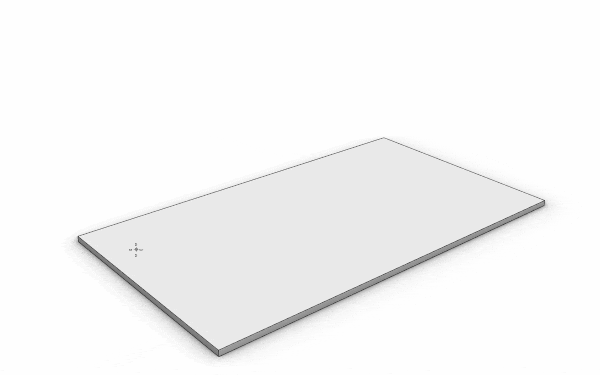Your Cart is Empty
Customer Testimonials
-
"Great customer service. The folks at Novedge were super helpful in navigating a somewhat complicated order including software upgrades and serial numbers in various stages of inactivity. They were friendly and helpful throughout the process.."
Ruben Ruckmark
"Quick & very helpful. We have been using Novedge for years and are very happy with their quick service when we need to make a purchase and excellent support resolving any issues."
Will Woodson
"Scott is the best. He reminds me about subscriptions dates, guides me in the correct direction for updates. He always responds promptly to me. He is literally the reason I continue to work with Novedge and will do so in the future."
Edward Mchugh
"Calvin Lok is “the man”. After my purchase of Sketchup 2021, he called me and provided step-by-step instructions to ease me through difficulties I was having with the setup of my new software."
Mike Borzage
Design Software History: Finite Element Analysis: A Cornerstone in Engineering Design from 1940s Origins to Future Innovations
September 29, 2024 5 min read


Introduction to Finite Element Analysis (FEA)
Finite Element Analysis (FEA) has become an indispensable tool in engineering design, enabling engineers to simulate and predict how complex structures will behave under various physical conditions. At its core, FEA is a computational technique that divides a complex object into smaller, manageable finite elements, allowing for detailed stress, strain, and deformation analysis. The significance of FEA in engineering design cannot be overstated; it allows for the optimization of designs, reduces the need for physical prototypes, and ensures safety and reliability in engineering products. The roots of FEA trace back to the 1940s and 1950s, a period marked by rapid advancements in engineering and mathematics. During this era, the need for more precise analysis methods became apparent, especially in fields like aerospace and civil engineering where complex structures demanded meticulous scrutiny. The pioneering work of individuals like Dr. Ray W. Clough played a pivotal role in shaping FEA. Dr. Clough, often referred to as one of the fathers of FEA, introduced the term "finite element" in a 1960 paper, laying the groundwork for future developments in the field. The evolution of computational resources during this time was equally crucial. Early computers were limited in capability, but the burgeoning field of computer science provided new opportunities to handle the extensive calculations required for FEA. The interplay between advancing computational power and the developing mathematical frameworks enabled FEA to move from theoretical concepts to practical applications. As engineers gained access to more powerful machines, the feasibility of performing complex simulations became a reality, setting the stage for FEA to become a cornerstone in engineering design.
Key Milestones in FEA Development
The 1960s marked a significant period in the development of FEA, primarily characterized by the introduction of the first finite element systems in structural analysis. During this decade, the use of mainframe computers became more widespread in engineering firms and research institutions. These powerful machines, though primitive by today's standards, facilitated complex calculations that were previously unmanageable. The role of mainframe computers was instrumental; they allowed engineers to process large matrices and perform iterative calculations necessary for FEA. Companies like Boeing and Lockheed began adopting FEA techniques to analyze aircraft structures, recognizing the value in predicting performance and identifying potential failure points.
The 1970s and 1980s witnessed the rise of commercial FEA software, transforming the theoretical and academic pursuits of the previous decades into practical tools for industry use. Major products such as ANSYS, ABAQUS, and NASTRAN emerged during this period, each offering unique capabilities and contributing to the widespread adoption of FEA. ANSYS, founded in 1970 by Dr. John Swanson, became known for its comprehensive simulation solutions. ABAQUS, developed by Paul Sorensen and David Hibbitt in 1978, focused on advanced nonlinear and dynamic analyses. NASTRAN, originally developed for NASA in the late 1960s by The MacNeal-Schwendler Corporation (MSC), became a standard tool in aerospace engineering. The impact of academic research during this era was significant, as universities and research institutions collaborated with industry to enhance FEA capabilities. This collaboration led to improvements in algorithms, user interfaces, and the overall accessibility of FEA tools.
In the late 20th century, advancements in mesh generation and solver algorithms propelled FEA to new heights. Mesh generation, the process of discretizing a structure into finite elements, became more sophisticated, allowing for the analysis of complex geometries with greater accuracy. Improved solver algorithms enhanced the efficiency and speed of calculations, enabling more detailed simulations within reasonable timeframes. The introduction of nonlinear analysis capabilities allowed engineers to study materials and structures beyond the linear elastic range, accounting for plastic deformation, contact issues, and large deformations. Dynamic analysis features were also incorporated, permitting the investigation of time-dependent phenomena such as vibrations and transient loads. These advancements broadened the scope of FEA applications and solidified its role as a fundamental tool in engineering design.
Applications of FEA Across Industries
Finite Element Analysis has found applications across various industries, each leveraging its capabilities to enhance design, safety, and performance. In the aerospace industry, FEA is critical for the stress analysis of aircraft components. Engineers use FEA to simulate aerodynamic loads, thermal stresses, and material behavior under extreme conditions. Companies like Boeing and Airbus rely on FEA to optimize aircraft designs, reduce weight, and ensure structural integrity. NASA has utilized FEA extensively in spacecraft design, analyzing components for missions that demand the highest reliability. The ability to predict how structures will respond to the complex combination of forces encountered during flight is essential for the safety and success of aerospace ventures.
In the automotive sector, FEA plays a vital role in crash simulations and vehicle dynamics. Manufacturers like Toyota and Ford have adopted FEA to improve safety features and enhance performance. By simulating crash scenarios, engineers can evaluate the effectiveness of crumple zones, airbags, and other safety systems without the need for extensive physical testing. FEA allows for the analysis of vehicle dynamics, including handling, braking, and acceleration. This leads to the design of vehicles that not only meet safety standards but also provide optimal driving experiences. The use of FEA in material selection and component design contributes to fuel efficiency and emissions reduction, aligning with industry trends towards sustainability.
Civil engineering has also benefited from the application of FEA in analyzing bridges, buildings, and other structures. Engineers employ FEA to assess structural integrity under various load conditions, including seismic activity, wind forces, and thermal effects. Significant projects around the world have utilized FEA to ensure safety and compliance with regulations. For instance, during the design of skyscrapers and long-span bridges, FEA helps in understanding how structures will behave under extreme conditions, enabling engineers to implement necessary reinforcements. The ability to model complex interactions between different structural elements provides insights that are crucial for the longevity and resilience of civil engineering projects.
The Future of FEA in Engineering Design
The future of Finite Element Analysis in engineering design is poised for significant growth, driven by advancements in technology and the evolving needs of industries. One of the key factors influencing this trajectory is the impact of cloud computing and increased computational power. Cloud-based solutions are making high-performance computing resources accessible to organizations of all sizes. This democratization of computational power enables more complex and comprehensive FEA simulations without the need for significant on-premises infrastructure investments. The ability to perform collaborative FEA analysis allows engineers from different disciplines and locations to work together in real-time, enhancing efficiency and innovation. Real-time simulations are becoming more feasible, providing immediate feedback during the design process and allowing for rapid iteration and optimization.
Integration with other technologies is another trend shaping the future of FEA. The combination of FEA with multiphysics simulations allows engineers to consider multiple physical phenomena simultaneously, such as thermal, structural, and electromagnetic effects. The Internet of Things (IoT) contributes to this by providing real-time data from sensors embedded in products and structures. This data can inform FEA models, leading to more accurate simulations and predictive maintenance strategies. AI-driven design is also emerging, where artificial intelligence and machine learning algorithms assist in optimizing designs based on FEA results. These technologies can analyze vast amounts of data to identify patterns and suggest improvements, accelerating the design process and leading to more innovative solutions.
In conclusion, the ongoing importance of FEA in innovation within engineering design fields is evident. As industries continue to face complex challenges, FEA provides the tools needed to understand and solve problems at a fundamental level. The reflection on how FEA will continue to shape engineering best practices and standards highlights its role in driving progress. Engineers will increasingly rely on FEA to push the boundaries of what is possible, from developing more efficient vehicles and safer buildings to advancing aerospace exploration. The evolution of FEA will likely involve further integration with emerging technologies, greater accessibility through cloud-based platforms, and continued improvements in simulation accuracy and speed. The commitment to innovation and excellence in engineering design ensures that FEA will remain a cornerstone of the industry for years to come.
Also in Design News

Enhance Your Workflow with Custom Parametric Walls in VisualARQ 3
October 30, 2025 5 min read
Read More
Cinema 4D Tip: Lock Framing Early with Cinema 4D Safe Frames and Aspect Overlays
October 30, 2025 2 min read
Read More
ZBrush Tip: Conservative Projection Workflow for Artifact-Free Detail Transfer
October 30, 2025 2 min read
Read MoreSubscribe
Sign up to get the latest on sales, new releases and more …


